Pihyangjeong Pavilion (정읍 피향정)
10.3Km 2025-01-17
2951 Taesan-ro, Taein-myeon, Jeongeup-si, Jeonbuk-do
Pihyangjeong Pavilion is known to be the most outstanding pavilion in all of Jeolla region. Orignally, there were two ponds around the pavilion, but one of the ponds were filled up with soil during the Japanese period. The pavilion's name derived from the scent of water lilies that bloomed afloat on the ponds. The pavilion demonstrates all the basic components of a typical pavilion built during the Joseon dynasty and is valued as an historical example of a wooden architecture during the mid-Joseon dynasty.
Buan Sports Park (부안스포츠파크)
12.3Km 2024-04-07
31, Cheyukgongwon-gil, Buan-gun, Jeonbuk-do
+82-63-580-3904
Buan Sports Park spans over an area of 82,644 square meters. The park has a natural grass soccer field equipped with 6,700 seats, track and field made with natural rubbers, a torch holder, tennis courts, baseball field, basketball court, footsal field, an in-line skating track, an experience hall for children, a playground, and more, as well as lighting facilities for nighttime events. Other facilities include water fountain, grass performance hall, various types of trees and flowers, benches and rest areas. With accommodations nearby, the park is used as a training facility for teams from elementary school students to even professional athletes.
Buan Masil Festival (부안마실축제)
13.1Km 2024-04-25
3 Byeolcheonji-ro, Buan-eup, Buan-gun, Jeonbuk-do
+82-63-580-4774
The Buan Masil Festival takes place in Buan, and introduces the local tourist attractions, nature, and culture to visitors.
Arirang Literature Museum (조정래 아리랑문학관)
13.4Km 2024-04-07
24, Yongseong 1-gil, Gimje-si, Jeonbuk-do
+82-63-540-3934
Located in Gimje, Jeollabuk-do, Arirang Literature Museum (Jo Jung-rae Arirang Literature Museum) was opened in May, 2003. The museum displays materials related to Jo Jung-rae’s novel "Arirang," a work praised to have x_heightened Korea's literature standards in aspects of cultural, literary, and popular value. "Arirang" takes place during the time of Japanese colonization, vividly describing the pain and common racial values which people shared as a whole amidst the suffering and efforts that were made to bring Korea's independence a step closer.
Shani Motel (샤니모텔)
13.6Km 2024-12-24
18 , Dongjung 3-gil, Buan-gun, Jeonbuk-do
+82-63-584-9935
Shani Motel is in Buan, Jeollabuk-do, and is accessibly situated just a 7-minute walk from the Buan Intercity Bus Terminal. Rooms are spacious and neat, and the motel is equipped with accessibility features for physically and visually impaired visitors, including disabled parking spaces, entrance ramps and braille blocks; guide dogs are welcome. Many tourists visit during the Masil Festival in May.
Gimje Horizon Festival (김제지평선축제)
13.7Km 2025-07-09
442 Byeokgolje-ro, Buryang-myeon, Gimje-si, Jeonbuk-do
+82-63-540-3037
In Korea, finding an unobstructed horizon is a rarity, making Gimje’s expansive horizon a unique and stunning sight. Held in the autumn when the fields are tinged with gold, the Gimje Horizon Festival celebrates this unique landscape. The festival aims to promote Gimje’s famous rice and preserve traditional agricultural culture based on the theme of, “where the land meets the sky.” The torch parade at night is the highlight of the festival. The spectacular performance in front of the huge twin dragon sculptures standing at the center of the Byeokgolje Reservoir (Historic Site No. 111) perfectly captures the festival’s vibrant and passionate atmosphere. Throughout the festival venue, there are farming activities, such as harvesting rice and threshing, as well as rural experiences of the past, such as catching grasshoppers and riding an ox cart.
◎ Byeokgolje Reservoir
Built during the Baekje period, the manmade reservoir shows the wisdom of Korea’s ancestors and the old agricultural system. On the embankment more than 3 kilometers long, five floodgates were installed to discharge water into the rice fields.
Naejangsan Cultural Tourism Musical Fountain (내장산 문화관광 음악분수)
13.7Km 2024-04-07
37 Naejanghoban-ro, Jeongeup-si, Jeonbuk-do
The Naejangsan Cultural Tourism Musical Fountain, set within Naejangsan Water Park, boasts an impressive array of over 110 songs, ranging from children's tunes and pop hits to movie soundtracks. Accompanied by 14 unique fountain shows featuring various types, the display is indeed a sight to behold. Spanning 56 meters in length and 21 meters in x_width, the fountain includes 463 nozzles and 276 underwater lights, all designed to captivate and amaze onlookers. The musical fountain offers three performances daily, each catering to different music tastes and themes. The 19:00 show highlights classic pop songs, the 20:00 show is perfect for young children with a repertoire of children’s music, and the 21:00 show soothes the evening with ballads and idol music. Whether one is with their significant other or enjoying family time, the musical fountain’s performances—akin to a magical dance of water and light—are sure to provide an enchanting experience.
Byeokgolje Reservoir Site (김제 벽골제)
13.8Km 2024-04-07
442 Byeokgolje-ro, Buryang-myeon, Gimje-si, Jeonbuk-do
+82-63-540-4094
Byeokgolje Reservoir Site is home to the embankment and stele recording reconstruction for Korea’s first ever reservoir. Records show it was rebuilt in the 6th year of King Wonseong of Silla (790), the 21st year of King Hyeonjong and King Injong of Goryeo (1143), and then again in the 15th year of King Taejong of Joseon (1415). It was lost due to heavy rain in 1420 (the 2nd year of King Sejong's reign).
Currently, only about 3 kilometers of straight embankment remains on the site. In 1925, the Dongjin Land Improvement Association remodeled this embankment and used it as a channel for providing water for farming, thus losing a lot of its original appearance. A monument was erected on the north side of the embankment to commemorate the rebuilding of Byeokgolje Reservoir during the Joseon Dynasty. However, it is difficult to read the writing because it is worn out.
In 1975, two sites with water gates that controlled the water in the reservoir were excavated, and the results showed that the construction used large-scale, high-level engineering technology. Byeokgolje Reservoir is not only significant in that it was Korea's first reservoir but also proves that the country’s civil engineering technology was developed enough to build such a reservoir at the time, revealing a groundbreaking fact in the history of science and technology in Korea.
Nearby tourist attractions can be visited together: Byeokgolje Agricultural Museum, where you can get a glimpse of the old agricultural culture, Theme and Experience Space for Agriculture, and Byeokcheon Art Gallery, which displays the works of Na Sang-mok, an Oriental Painting artist in Korea.
* Pets are allowed; however, a leash is required.
Mirsaem Bridge (미르샘 다리)
13.9Km 2025-01-16
Sinjeong-dong, Jeongeup-si, Jeonbuk-do
Mirsaem Bridge is a 642-meter wooden deck bridge that spans Yongsanho Lake. Benches are placed in the middle of the bridge for visitors to sit and rest during their crossing. The lakeside fountains operate until 21:00 from March to November and until 22:00 from June to September. At the center of the bridge is an art installation that represents Jeongeup. There is glass flooring near the fountain by the art installation, allowing visitors to see the water below their feet. For visitors who want to savor the nature-friendly atmosphere, cross the bridge and follow the trail leading to a mountain forest to continue the adventure. The bridge has night lights installed that turn on after sunset until 22:00, making it an ideal place for an evening stroll as well.
Byeokgolje Museum of Agricultural Culture (벽골제 농경문화 박물관)
13.9Km 2024-04-06
442, Byeokgolje-ro, Gimje-si, Jeonbuk-do
+82-63-540-4989
The largest irrigation facility in Korea, Byeokgolje Reservoir (Historic Site) is considered the birthplace of Korea’s rice-farming culture. All that remains of the reservoir today are a three-kilometer long embankment that spans from Sinyong-ri to Wolseung-ri in Buryang-myeon, Gimje-si and a monument that was erected in 1415. The Byeokgolje Museum of Agricultural Culture exhibits around 250 artifacts related to rice farming; located within the same complex is an experience center where visitors can discover many properties of irrigation facilities first-hand.
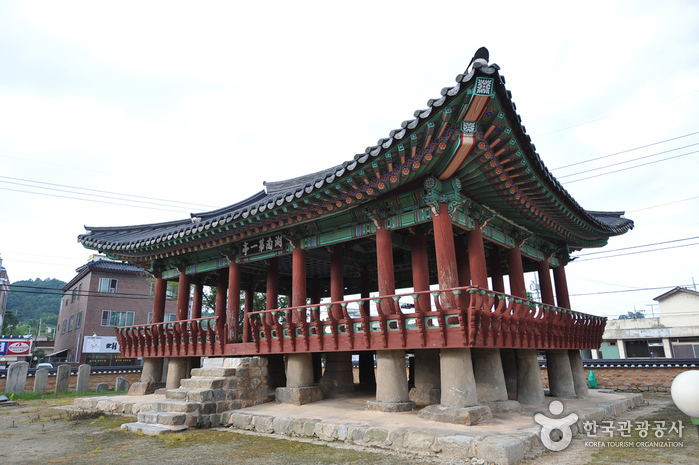

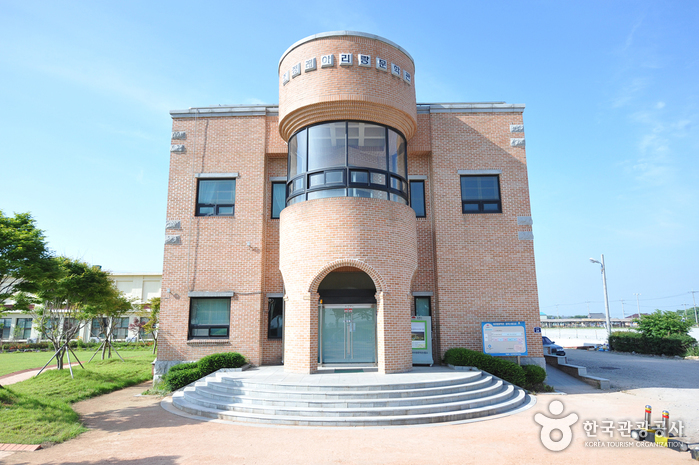
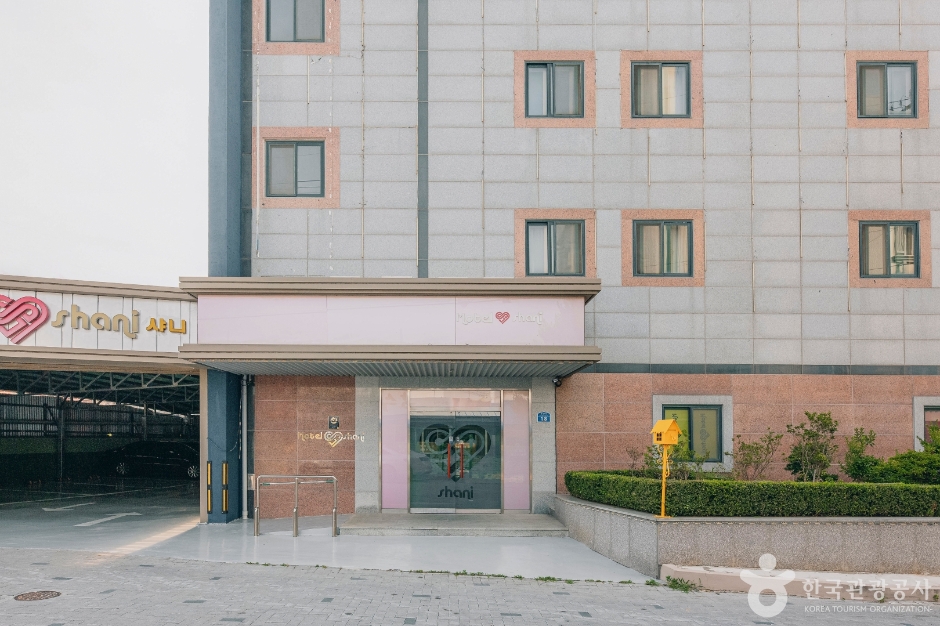
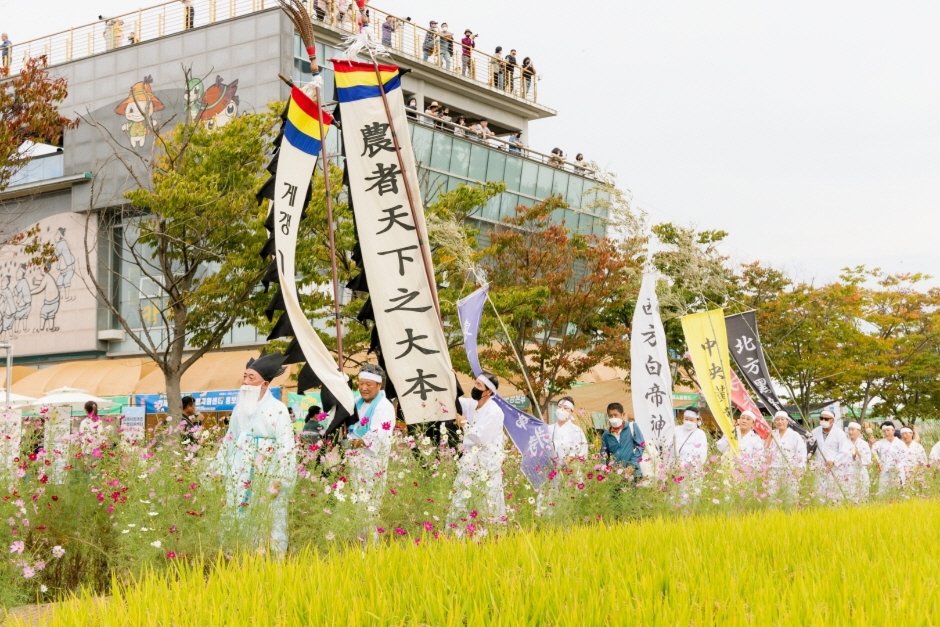
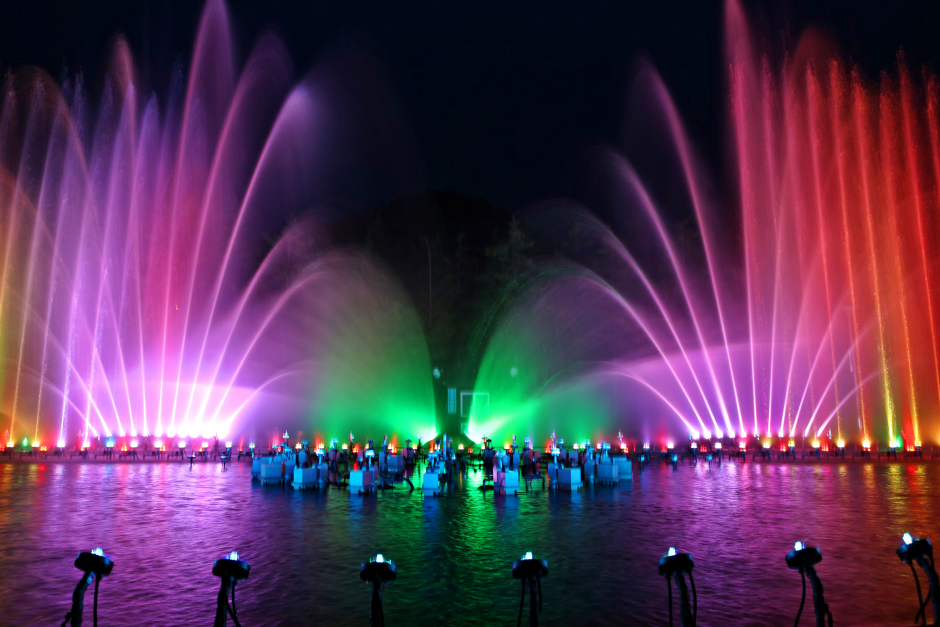
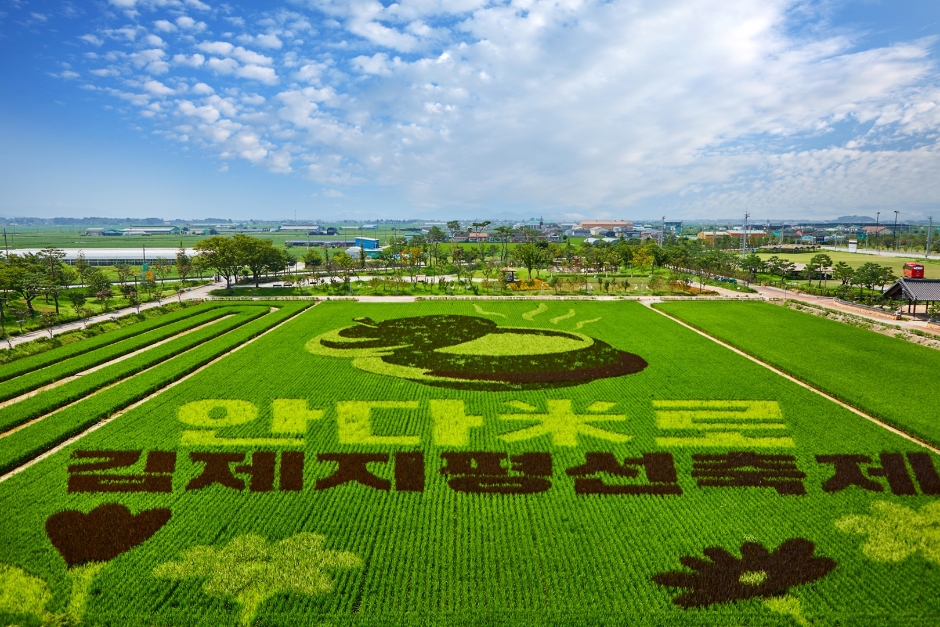
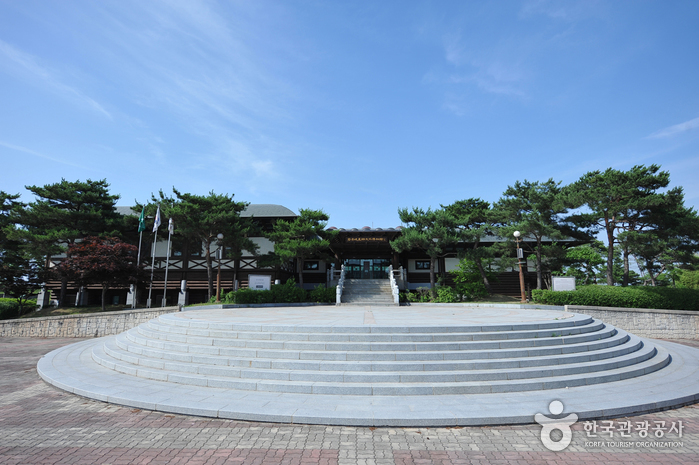
 English
English
 한국어
한국어 日本語
日本語 中文(简体)
中文(简体) Deutsch
Deutsch Français
Français Español
Español Русский
Русский